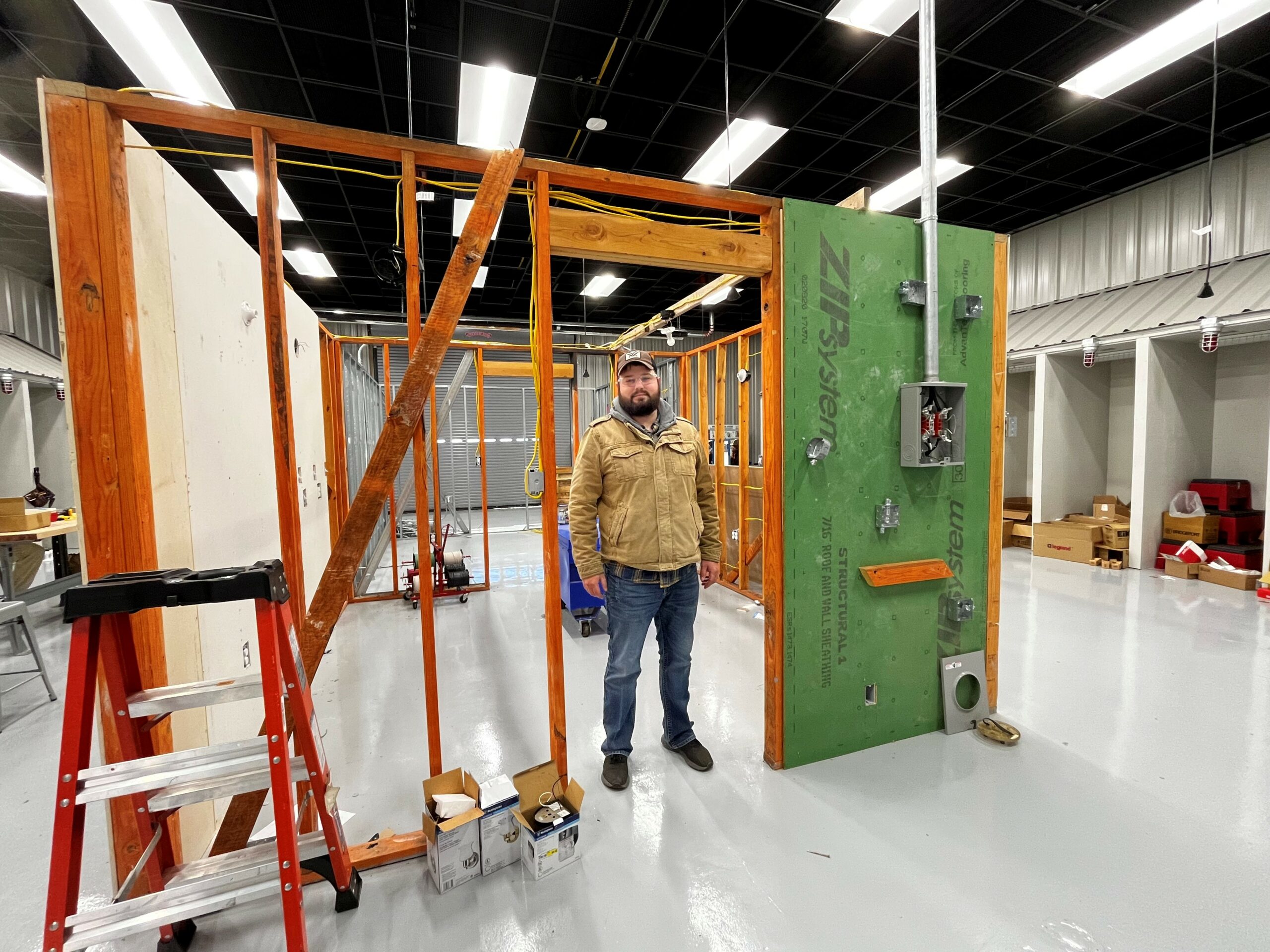
Kiamichi Tech Center Atoka Campus: Innovation, Creativity, Experience
February 17, 2023 by Jessika Leatherbury
By: Sunnie Dawn Baker
 As Greg Davidson, campus director of the Kiamichi Technology Center (KTC) Atoka campus, gives a tour of his campus, the pride he feels in his institution is evident, and also well deserved. Looking at the building from the parking lot, it seems like it would be small and house only a few programs, but as we traverse the grounds, multiple buildings and spaces are revealed, each housing a revamped program with innovation in mind. At this campus, they offer nine programs plus career development and science and math classes. The majority of the teachers were once students here—students who completed the program, went off to work, and then came back to impart their own knowledge and experience on future generations. Those who were not former students still have strong roots in the area, and their teaching extends beyond education; they have a passion for shaping these young minds and encouraging them to think critically and creatively in order to follow their dreams.
As Greg Davidson, campus director of the Kiamichi Technology Center (KTC) Atoka campus, gives a tour of his campus, the pride he feels in his institution is evident, and also well deserved. Looking at the building from the parking lot, it seems like it would be small and house only a few programs, but as we traverse the grounds, multiple buildings and spaces are revealed, each housing a revamped program with innovation in mind. At this campus, they offer nine programs plus career development and science and math classes. The majority of the teachers were once students here—students who completed the program, went off to work, and then came back to impart their own knowledge and experience on future generations. Those who were not former students still have strong roots in the area, and their teaching extends beyond education; they have a passion for shaping these young minds and encouraging them to think critically and creatively in order to follow their dreams.
Of the nine programs offered, only one, Welding Technology, has not yet been redesigned, though this is in the works and will happen soon. This is particularly exciting for the instructor, Jacob Callicoat, as he will get to have a say in the further development of this program. Callicoat studied welding at KTC when he was in high school, though he got his first experiences with welding when he was around ten years old, working on his family’s ranch. Doing basic welding, helping build fences, was just a part of his work as a kid and this gave him a familiarity and ease with the craft which made it an obvious choice when he entered KTC. he was a natural. When he finished his studies, he was ready to go out and work.
While welding can lead to many different jobs, Callicoat decided to pursue welding on pipelines. This took him all over Oklahoma, Texas, Kansas, New Mexico, and Colorado. For an eighteen-year-old, right out of high school, it was a perfect opportunity to travel and earn some good money. Callicoat says, “It was pure freedom.” However, even though he enjoyed the work, he had a couple kids at home and a cattle ranch to take care of. He needed something closer to home and that is when he had the opportunity to take over the Welding Technology position at KTC.
 Callicoat’s own personal experiences allow him to help his students shape their own futures. Some may want to work on pipe while others may want to work at a local manufacturer and Callicoat wants to help his students plug in to the career that will suit them the best. While the foundations of welding remain the same, the field is also always constantly changing and innovating, and Callicoat wants to make sure that this knowledge is passed on to his students. Callicoat says, “After you learn a trade you pick up little bits of experience that help you streamline things. You find ways to make something better or more efficient. If I get around an older welder I listen to every thing that have to say.” While Callicoat’s own experiences get passed on to his students, it is also generational knowledge that can lead to innovation and innovative thinking.
Callicoat’s own personal experiences allow him to help his students shape their own futures. Some may want to work on pipe while others may want to work at a local manufacturer and Callicoat wants to help his students plug in to the career that will suit them the best. While the foundations of welding remain the same, the field is also always constantly changing and innovating, and Callicoat wants to make sure that this knowledge is passed on to his students. Callicoat says, “After you learn a trade you pick up little bits of experience that help you streamline things. You find ways to make something better or more efficient. If I get around an older welder I listen to every thing that have to say.” While Callicoat’s own experiences get passed on to his students, it is also generational knowledge that can lead to innovation and innovative thinking.
This transfer of knowledge and experience is also apparent in another program at KTC: Electrical Technology. This program was new to their schedule in Fall of 2022 and is taught by another former student, Cooie Potts. Potts was brought on as an instructor while they were in the process of redesigning the program and so he was able to oversee some of the changes and decide how he wanted to teach the class. Potts says, “They let me teach the way I feel the students should be taught. It might not be the traditional way, but the students are learning. They didn’t hire a teacher to teach this class; they hired an electrician.”
Potts attended the construction program at KTC when he was in high school and then went to OSU IT to become an electrician. While that was a great program, it was more focused on theory and academics rather than a hands-on approach. After graduating, he went to work as an electrician and learned even more from being in the field and working with those who were more experienced. Potts’s wealth of experience is what inspired him to teach the way he does—completely hands on and simulating the things in the classroom that the students would experience in the field.
“This is an electrician’s playground,” Potts says with a chuckle as he gives a tour of the classroom which feels more like a workshop or an electrical laboratory. Booths line one wall where students can immerse themselves with different types of wires, circuits, and switches. A structure occupies the center of the room which allows the students to actually wire a residential or a commercial style space; the front portion is a wood frame and the back portion is made of metal. Once the students have completed their wiring and circuitry they can flip the switch and see if they did it right. On the other side of the room are several stations that allow students to experiment with motors and controls. These are the same types of boards that they would see in an industrial setting. Finally, there is their new equipment—the Amatrol all-in-one motors and controls learning system—which allows students to wire everything up correctly but will then cause something to go wrong so the student has to diagnose the issue and fix it. It is problem solving at its finest.
This focus on thinking creatively about technical instruction extends throughout the KTC campus, even, and especially, to the science and math classes that students may take there to fulfil high school requirements. Lori James teaches Algebra 2, Geometry, and Anatomy & Physiology. Some of her students find math and science difficult so she has to find ways to make it engaging and meet the students where they are—figuring out their strengths and using those strengths to make the material make sense. She has developed a YouTube channel to explain math, uses clay to model muscles on skeletons, and encourages her students to use their own skills to illustrate their knowledge. She has even had welding students construct human hearts and animal cells out of metal. As an Atoka native who returned after teaching in Houston, her rural community is important to her and she sees her position as an opportunity to help these students grow into strong creative thinkers.
While Kiamichi Tech’s main goal is to prepare students to enter the workforce with quality, high paying jobs, this preparation also helps their students think critically about the work they do. This emphasis on critical thinking, relayed in a hands-on method, combined with the generational knowledge and experience of their instructors, can create a breeding ground for innovative thinking. While they learn their craft and refine their skills, they are also challenged to think about new ways to streamline processes or solve problems that may arise—two things that are at the heart of innovation.
Sign up to receive more news from the Ada Jobs Foundation HERE!
Written by
Jessika Leatherbury
You may also interested in:

Adapt and Overcome: Allison Poe’s Recipe for Resilience and Growth
By: Sunnie Dawn Baker Allison Poe has always followed her feet. She waits for the signs to appear and, once she recognizes them, she travels that path, and has never
Jeff Warren: A Life in Sound, Vision, and Storytelling
By: Sunnie Dawn Baker When Jeff Warren got involved in the Houston music scene as a teenager, he had no clue where his path would lead. Now, nearly thirty years
From Pitch to Progress: ECU's Glass Recycling Program Turns Waste into Opportunity
By: Sunnie Dawn Baker In 2018, Dr. Christine Pappas competed in Ada Jobs Foundation’s Big Pitch Competition by promoting grinding glass bottles into sand. She won the Big Pitch that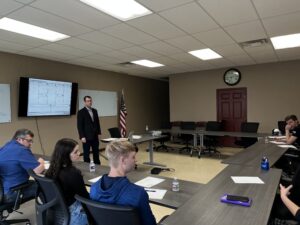
The Importance of Customer Discovery: Know Your Audience and Know Your Market
By: Sunnie Dawn Baker Entrepreneurs and small business owners must consider many factors to achieve success, with their target market being one of the most crucial. Sometimes, when people are
What Does Economic Development Do for You? The Significance of the Economic Multiplier
By: Sunnie Dawn Baker People often find the term “economic development” vague and confusing. Understanding how economic development works and benefits the community can be challenging. Though there are many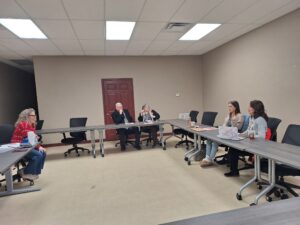
Helping Entrepreneurs One Workshop at a Time: Lauri Rowe and QuickBooks for Small Businesses
Entrepreneurs tend to be filled with passion and big ideas. They have found a solution to a problem they see in the world, and they barrel ahead, excited for their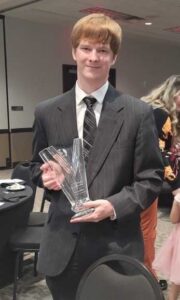
Hunter Cook: Technology, Entrepreneurship, and the Written Word
By: Sunnie Dawn Baker Hunter Cook started writing when he was seven years old. At first, he wanted to write comic books, but then he realized he couldn’t draw. He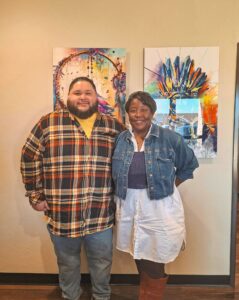
Empowering Native Artists: FAME App Brings Innovation to First American E-Commerce
By: Sunnie Dawn Baker Entrepreneurs are problem solvers. They are constantly striving for solutions to issues they see in the world or in their own lives. In the case of
Learn, Connect, and Grow: 2025 Workshops for Aspiring and Current Business Owners
By: Sunnie Dawn Baker A new year brings new possibilities, and, at the Ada Jobs Foundation, it also brings a new round of programming and workshops. As the local Economic